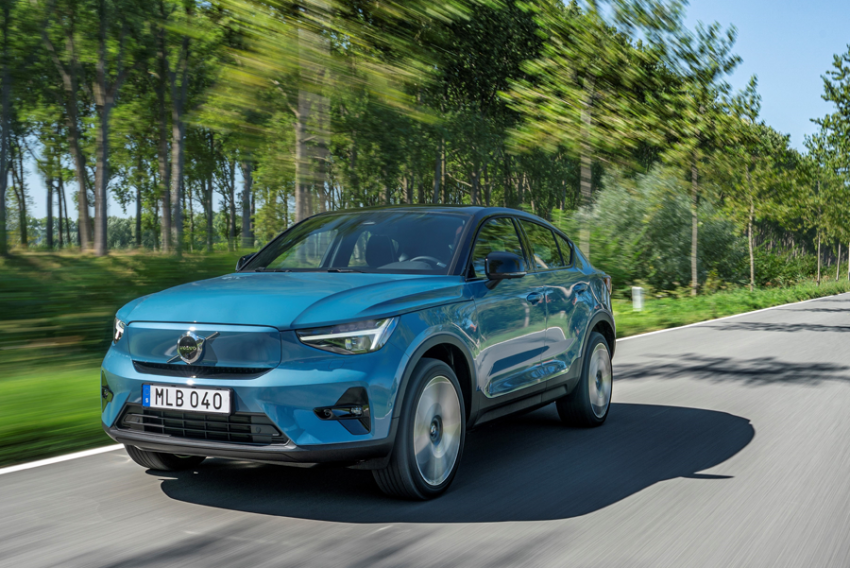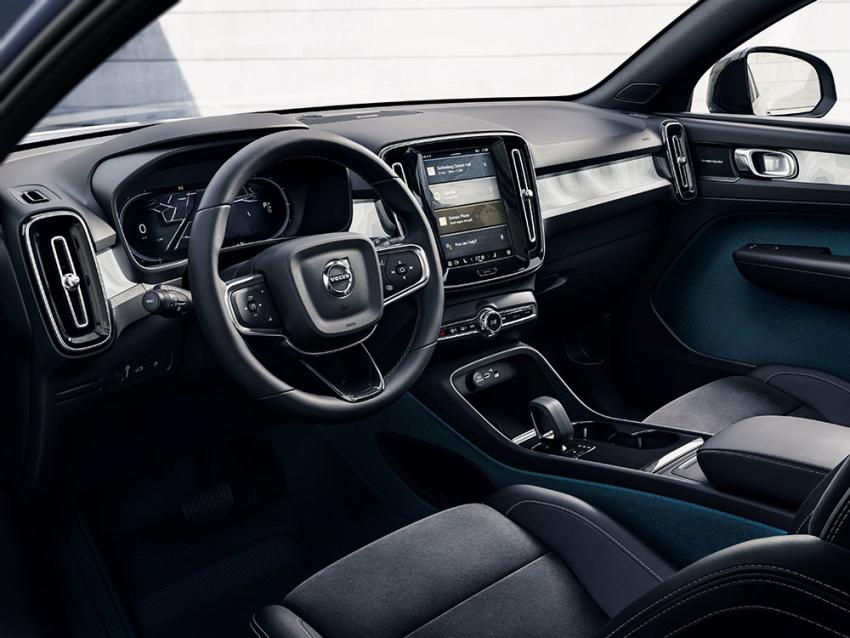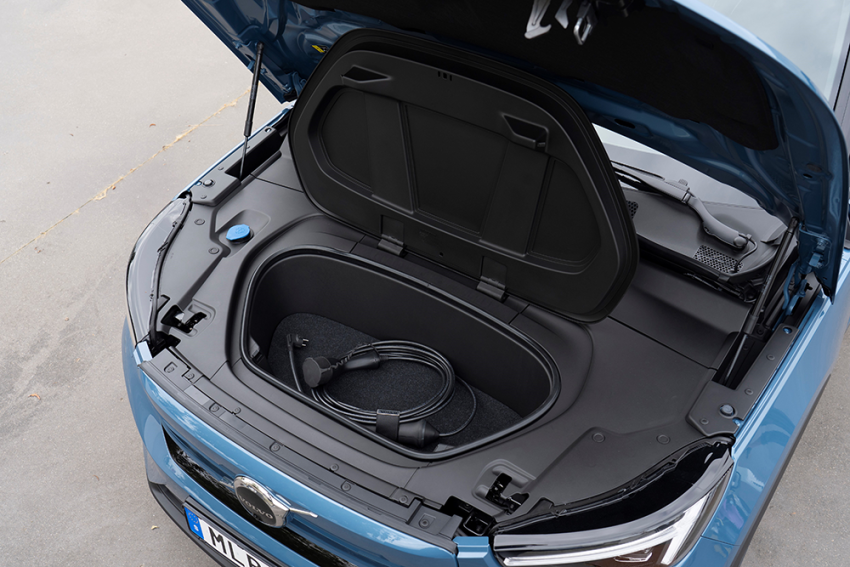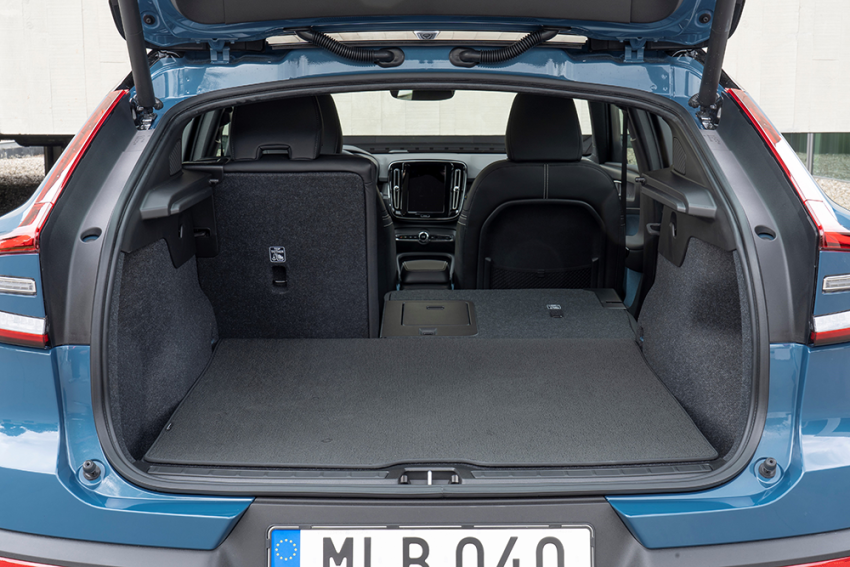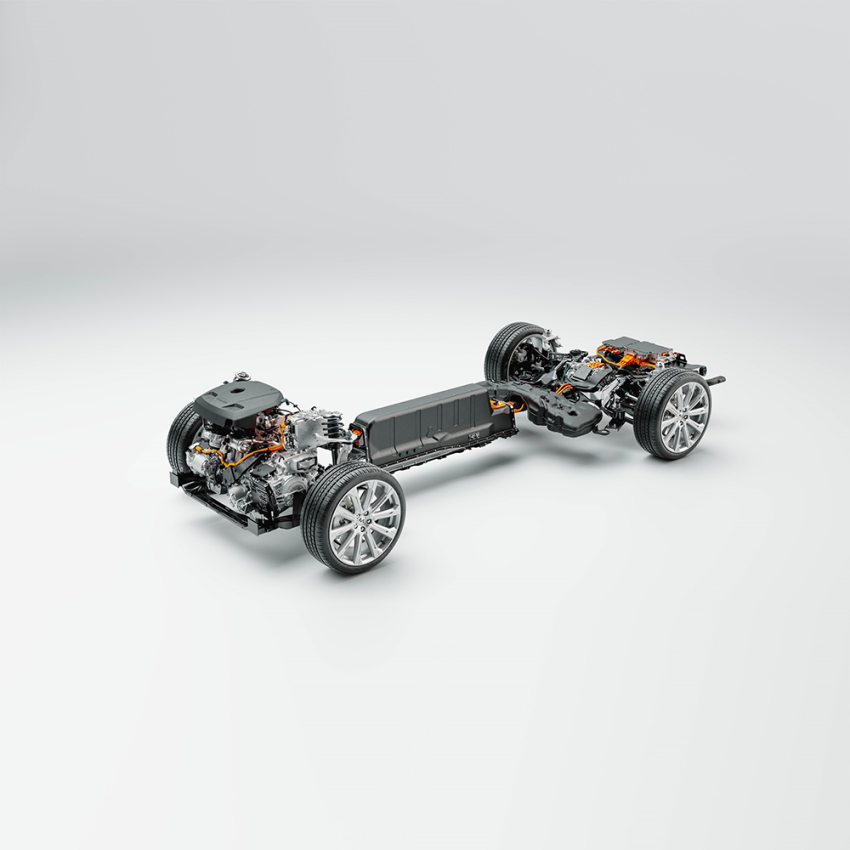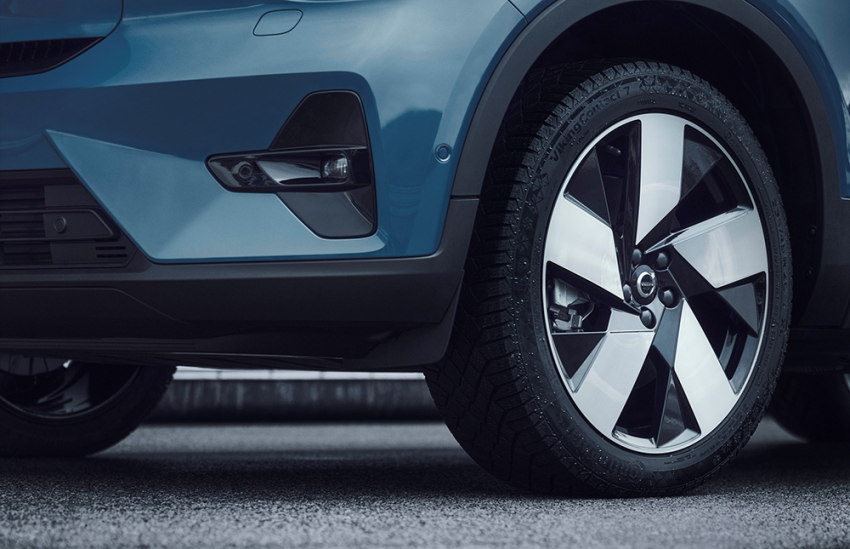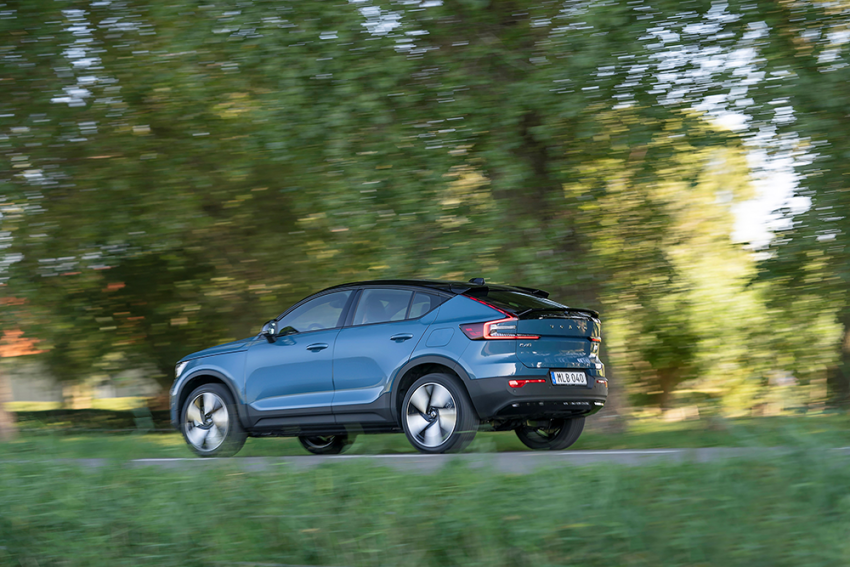Over the years, a limited number of innovative and downright revolutionary vehicles have represented historic milestones for several brands. For the Scandinavian manufacturer, the C40 is one of these, a technological divide between internal combustion and pure electric power. Built in 2021 on the Geely Group's new CMA platform (with Volvo as the flagship of the group) and assembled at Volvo's Gent factory in Belgium, this is the Swedish brand's first car designed to run exclusively on zero emissions, the forerunner of a production that promises to offer exclusively electric vehicles by 2030, with at least half of its production in EVs by 2025 and hybrid models making up the remainder. As if to say, from here on, the path is set and fossil fuels will remain, at least in these parts, just a memory.
Part SUV and part coupe
The resemblance to its sister XC40 is quite evident, and despite the absence of the X its features retain the distinctive crossover style. Emphasising the purely ecological nature of the C40 the front-end design lacks the classic cooling air grille, replaced by a slenderer profile with a 'closed' grille bearing the classic Volvo “iron mark”. Defining the front section are the full LED light clusters, with pixel technology and able to automatically adapt to the brightness or darkness outside, designed for the long Scandinavian winters and effective at any latitude and in any condition. At 4.44 metres in length, 1.87 in width (2.03 m at the mirrors) and 1.59 in height, the C40 appears compact and streamlined, while maintaining sufficient room for five passengers thanks to its generous 2.7 m wheelbase and 1.6-metre-wide track. Along the sides, the door panels in a neutral dark tone, run along the entire lower section of the car, underlining its sport utility ambition. Despite the raised beltline and consequently the smaller windows, light inside comes courtesy, in perfect 5-door coupé style of a large panoramic glass roof, tapered at the rear by a first spoiler, which surmounts a second spoiler placed at the base of the rear window which gives a dynamism look and a streamlined silhouette. For the rear light clusters, the LED light clusters are integrated in a vertically developed design reaching right up to the edge of the roofline. The overall design, which only hints at the fact that this is a full electric vehicle (forget the futuristic eggshells and contraptions of the first sector studies), includes 19- or 20-inch alloy wheels with a distinctive full-spoke design, heralded by Volvo’s 360c concept car back in 2018, which contribute functionally to the aerodynamics as well as to the overall looks of the car. Faithful to a “green” philosophy, the C40's is the first Volvo interior layout without leather, either standard or on request, preferring upholstery made from fibres and polymers obtained from recycled plastics, with fabric or suede-like seats that do not, however, detract from comfort and the perception of quality. Equally important are the on-board features, starting with a fully digital dashboard, developed in collaboration with Google, to ensure connectivity and interaction of the main functions through devices and smartphones. Next to the 12.3" front Tft is the 9" vertical display with Android system, reproducing every useful function, from climate control to navigation and infotainment, not to mention the battery charge and real time consumption. Thanks to seamless connectivity, the system allows software updates in over-the-air mode, constantly evolving and expanding its functions over time. Behind the three rear passengers we find a 413lt luggage compartment, which was made possible by the absence of a spare wheel replaced by the now customary emergency repair kit, expandable to 1,205 litres by reclining the rear seat. A further 31 litres of space can be found in a front compartment useful for storing the charging cable and little else.
Two engines...or one
The project, which started out as a 4WD sport utility, envisaged the adoption of two electric units with permanent magnets, one per axle, so as to manage traction on each individual wheel via control units. Later, Volvo opted also for a model with rear-wheel drive only, dispensing with the additional motor for those who did not feel the need for a traction surplus, thus favouring consumption, weight and, last but not least, purchase price. At the top of the range we find the C40 Recharge Twin Motor, powered by two electric units, front and rear, initially 150 kW each - presented at the model's launch in 2021 - replaced in the 2024 model year (on sale from this year) by more efficient power units, respectively with 110 and 190 kW of power, an impressive 408 hp combined and 670 Nm of total torque all already available from 0 rpm. The 82-kWh lithium-ion battery pack gives the C40 Twin Motor a claimed maximum range of 549 km, compared to the 451 km guaranteed by the previous 78 kW battery pack. For the 175-kW single-engine C40 (a more powerful 185 kW unit is also available on request), the 69-kWh battery allows an expected range of up to 478 km, rechargeable from 10% to 80% in about 30 minutes via a fast-charging station, while the Extended Range engine option also adapts the 82 kWh batteries, with extended range up to 581 km (according to WLTP standards). The suspension layout of the C40 - like its sister XC40 - makes use of independent front wheels with McPherson system and independent multi-link at the rear. Coil springs and hydraulic shock absorbers provide a balanced compromise between stability and comfort, while two stabiliser bars ensure greater handling when cornering at speed. Progressive electric power assistance contributes to driving precision, while the braking system, with inertial energy recovery, is managed by four discs assisted by Abs with EBD and Eba braking assistance. Despite an overall mass in running order ranging between 2,065 and 2,185 kg, the performance fully expresses its dynamic looks, with 0-100 km/h acceleration for the Twin Motor in just 4.7 seconds (7.3 seconds for the Single Motor) and a top speed limited to 180 km/h. A comprehensive set of Adas devices, with sensors and a 360° camera, ensure lane keeping, in the event of driver distraction, automatic braking when approaching an obstacle and in numerous other potentially dangerous situations. Together with high-strength materials and the design of the ‘cage’ protecting the passengers, these have enabled the C40, like the rest of the Volvo range, to obtain five stars in the EuroNCAP impact tests. There are two possible options for the wheels, both generously sized 19 or 20 inch with different tyres between front and rear and sizes between 235 and 255 mm wide with shoulder ratios between 50 and 40.
